 |
Structures of
Boron Interstitial Clusters |
 |
Click on images for interactive 3D structures or View Bandstructures
BiX (C1h symmetry) |
BI |
Bs-Sii (C3v symmetry) |
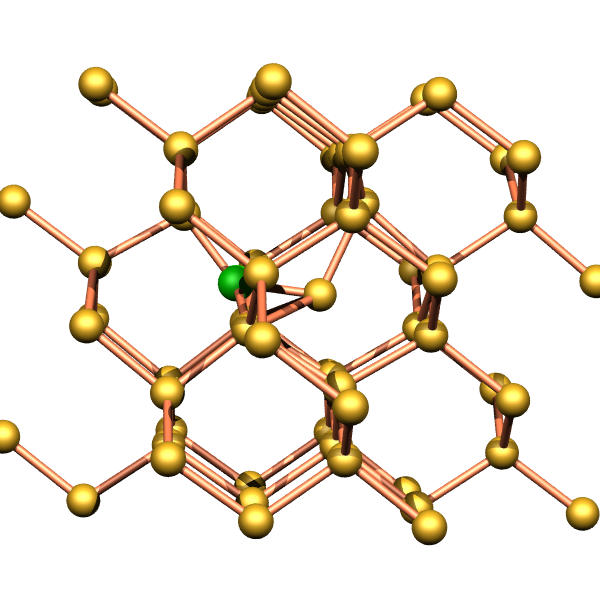
|
BiX (left) is the ground-state structure of the boron interstitial defect in the negative charge state and Bs-Sii (right) the ground-state in the positive charge state. In the neutral charge state Bs-Sii is found to be 0.18 eV lower in energy in contradiction with experiment1 which finds the ground state to have C1h symmetry.
|
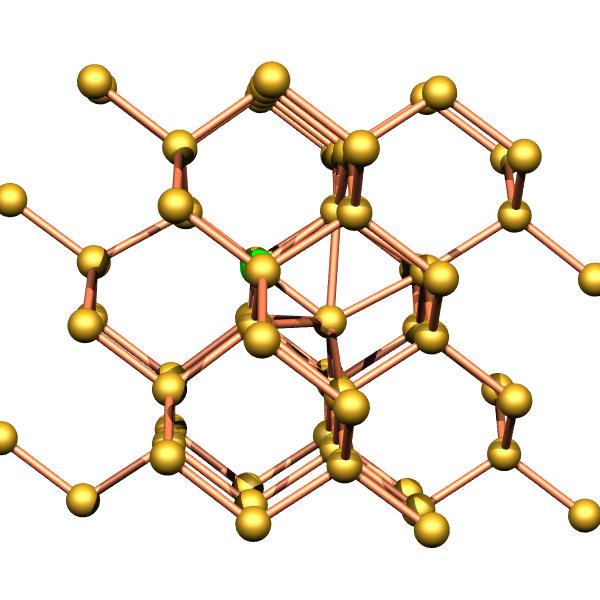
|
BsBiS (in D3d form) |
B2I |
<0 0 1> B dimer |
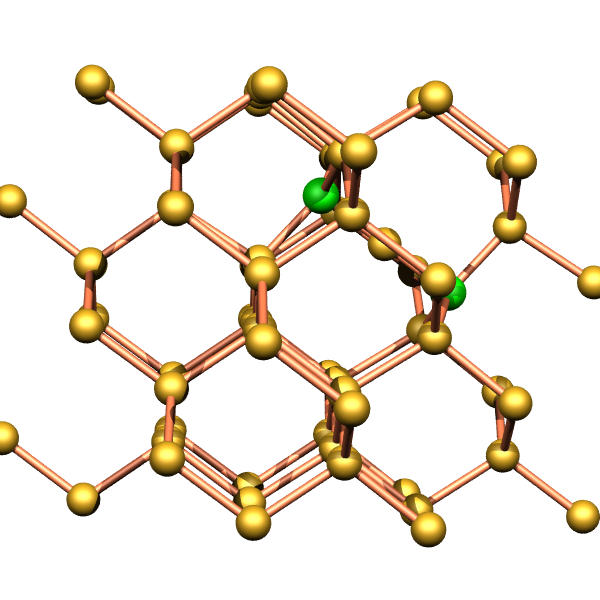
|
The transient S defect (left) which converts into the stable Q defect (right) apon annealing of BI at around 250K2. The Q defect is electrically inactive and very stable. It doesn't anneal until approx 220°C3.
|
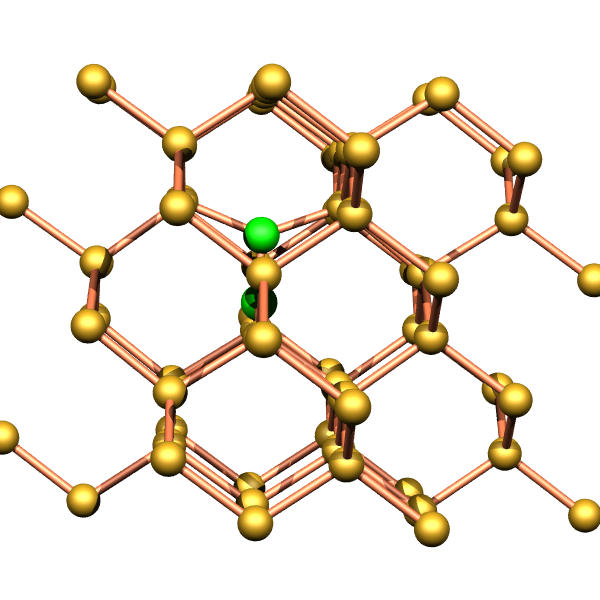
|
B2I3Y |
B2I3 |
B2I3r |
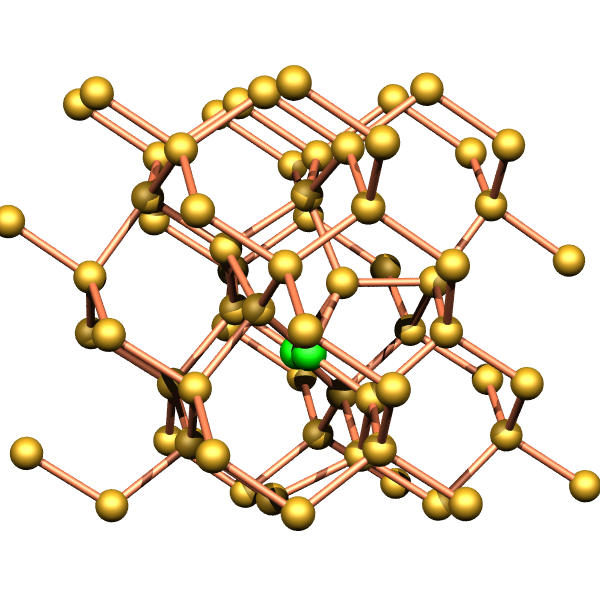
|
The defect believed responsible for the I2 (or Y) photoluminescence centre and corresponding local modes (left). The lowest energy configuration of B2I3 is the six member ring configuration (right)4 although the properties of this stucture do not tally with any properties of an observed boron-interstitial cluster.
|
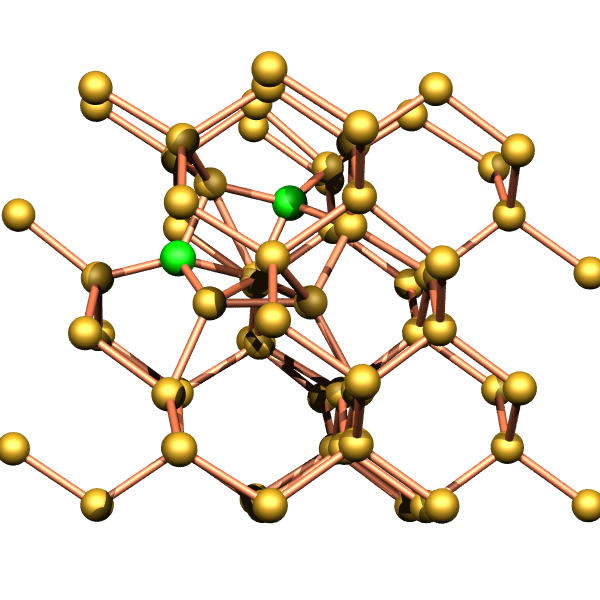
|
1, G.D. Watkins and J.R. Troxell. Phys. Rev. Lett. 44, 593 (1980)
2, A.K. Tipping and R.C. Newman. Semicond. Sci. Technol. 2, 389 (1987)
3, G.D. Watkins. Phys. Rev. B. 12, 5824 (1975)
4, X. Liu, W. Windl and M. Masqueleir. Appl. Phys. Lett. 77, 2018 (2000)



